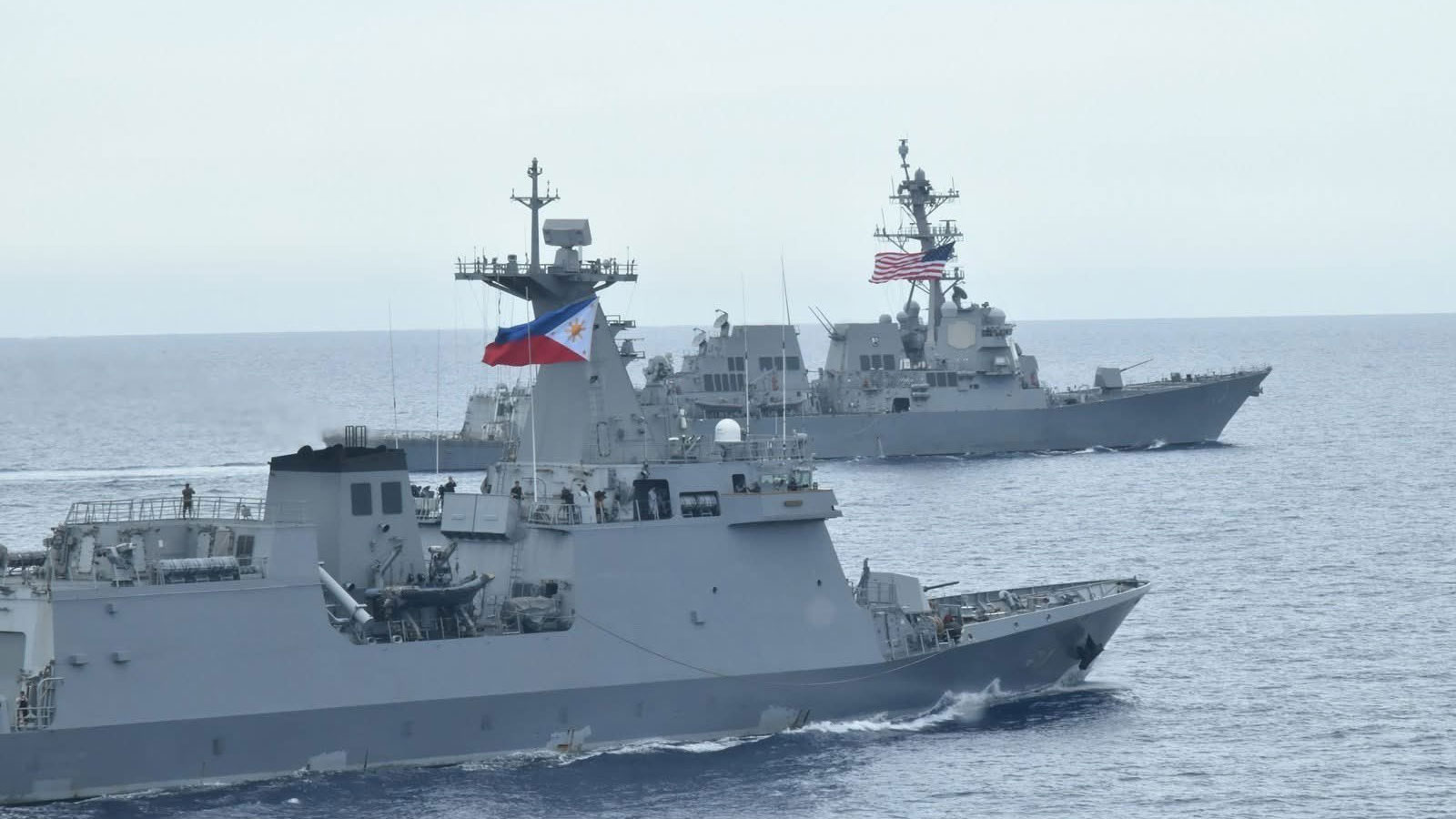AMERICAN, Japanese, and Filipino troops have held a series of exercises in the West Philippine Sea, enhancing the interoperability of the three sides in safeguarding peace in the region, the military said yesterday.
The drills under two-day multilateral maritime cooperative activity (MMCA) that ended on Saturday were conducted in the waters off Magalawa Island in Palauig town and Silanguin Island in San Antonio town, both in Zambales.
The MMCA, the 11th iteration since last year and second for this month, included an anti-submarine exercise, communications check exercise, maritime domain awareness activities, cross-deck landing exercise, naval surface interdiction and clearance, division tactics/officer of the watch maneuvers, photo exercise, passing exercise, search and rescue exercise (SAREX), and final exercise.
The Philippine military deployed the guided missile frigate BRP Jose Rizal for the 11th MMCA, along with four FA-50 fighter jets, an AW-109 anti-submarine helicopter, a search and rescue aircraft, a C-208B surveillance aircraft,
The Indo-Pacific Command sent guided missile destroyer USS John Finn (DDG113), a P-8A Poseidon maritime patrol aircraft, and two MH 60-R helicopters, while the Japan Maritime Self-Defense Force deployed the landing ship tank JS Osumi which the military said demonstrated its “amphibious capabilities and operational readiness in combined maritime operations.”
“These continuous engagements underscore the sustained commitment of the three nations to enhancing maritime cooperation, promoting regional security, and supporting a rules-based international order in the Indo-Pacific,” the military said.
The Armed Forces has been conducting MMCAs with allied nations since April 2024 to “strengthen regional and international cooperation in support of a free and open Indo-Pacific through interoperability exercises in the maritime domain.”
“The successful conduct of the MMCA not only enhances the interoperability of the participating forces but also reaffirms the Philippines’ steadfast commitment to safeguarding its maritime interests and upholding peace and security in the region,” the AFP said of the latest MMCA.
DRONES
Camarines Sur Rep. Luigi Villafuerte has filed a bill seeking to enhance the military’s national defense capabilities by procuring unmanned aerial systems (UAS) or military-grade drones.
“It is imperative for our military and defense establishment to acquire, deploy and integrate military-grade AES involving UAVs (unmanned aerial vehicles), otherwise known as ‘drones,’ to strengthen the Philippines’ military defense, surveillance and disaster response, amongst others,” he said in House Bill No. 1362.
Villafuerte said the drones will be used not only for anti-terrorism, anti-insurgency and border patrol missions “but for environmental protection, disaster response and search-and-rescue operations as well.”
The bill defines UAVs as “aircraft or drones that are operated remotely by a pilot from a well calculated distance to oversee a wide range of landscape, seascape, riverscape and cityscape, amongst others, for purposes of aerial photography and aerial videography, surveillance and security, search and rescue, delivery of goods and services, monitoring of climate change and other environmental changes, and military operations.”
“Drones have become beneficial when these unmanned vehicles made their way into the daily operations of different sectors owing to their numerous functions, such as for photography and videography,” he said.
“Their use made military operations 10 times faster and more efficient in terms of surveillance and security, search and rescue, and monitoring climate change as human capacity and capabilities are limited,” he added.
Under the proposed “National Defense Drone Act,” the Department of National Defense (DND), in coordination with the AFP and the National Disaster Risk Reduction and Management Council (NDRRMC), will establish the Philippine Unmanned Aerial Systems Program (PUASP) “to oversee the acquisition of drones, deployment of such unmanned vehicles across military branches, inter-agency usage protocols, data security compliance and training of drone operators and technicians.”
The bill requires the DND to acquire surveillance and reconnaissance drones for real-time monitoring of maritime, border and insurgency-wracked areas; combat drones equipped with precision-guided munitions for defense or combat operations; logistics and medical evacuation (medevac) drones for supply transport and medical emergency support in inaccessible areas; and disaster response drones for rapid assessment, search-and-rescue and aid delivery during calamities.
The bill mandates military “to pursue research and development (R&D) activities with local universities and colleges as well as tech start-ups to spur the local manufacture and maintenance of drones.”
It also provides for the establishment of the Strategic Defense Technology Transfer Program, as a complement to the PUASP, to provide tax incentives to private companies engaging in drone development, “as a way to encourage local innovation and reduce long-term costs for the military’s drone acquisition program.” – With Wendell Vigilia





